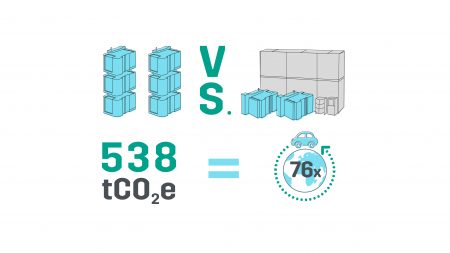
Fastems delves into the link between automation and improving sustainable manufacturing
Maryam Farag
Industry Energy Manufacturing automation CO2 emissions energy environment manufacturing Sustainability Technology
Photo: Fastems.
Fastems has taken its first steps towards understanding how automation enables more sustainable production development and how to reduce the company’s own environmental impact.
Together with sustainability agency Gaia Consulting, Fastems has modeled the mechanism that measures how much tCO2e is saved through investing in an average Fastems flexible manufacturing system (FMS). This measurement is called the carbon handprint. According to these calculations, one can save up to 538 tCO2e through the investment, which equals to making 76 car trips around the globe.
“The effect is possible because automation can triple the utilization rate of machine tools,” said Mikko Nyman, CEO, Fastems. “A typical non-automated machine tool cuts chips around 2,000 hours per year whereas an automated one can reach 6,000 – or even over 8,000 – yearly production hours. This means that instead of purchasing six non-automated machine tools, manufacturers can purchase two automated ones to achieve the same production capacity.”
The figures represent the typical milling machine sizes integrated by Fastems and the typical emissions caused by their production, netted against the emissions caused by the production of the automation solution. An estimate of 34 tCO2e is also being saved every year in heating (or cooling) costs because of saved floorspace.
Regarding Fastems’ direct emissions and those from purchased energy (GHG Protocol Scopes 1–2), the biggest share comes from consuming electricity and heat, which make up for nearly two-thirds of the company’s carbon footprint. Now that scopes one and two have been calculated, Fastems’ next step is measuring its indirect emissions (GHG Protocol Scope 3) beginning with business travel, and to set goals in 2021 to reduce its carbon impact.
“Despite business travel makes only a part of our indirect emission, it’s one of the most substantial ones and once calculated during the fall of 2021, we’ll know much more about our environmental impact as a whole and be able to set goals to reduce it,” said Nyman. “The carbon hand- and footprint calculations, understanding the three pillars of sustainability and what they mean to us, as well as setting goals for the future are what allow us to build a more climate-friendly Fastems and manufacturing industry.”
